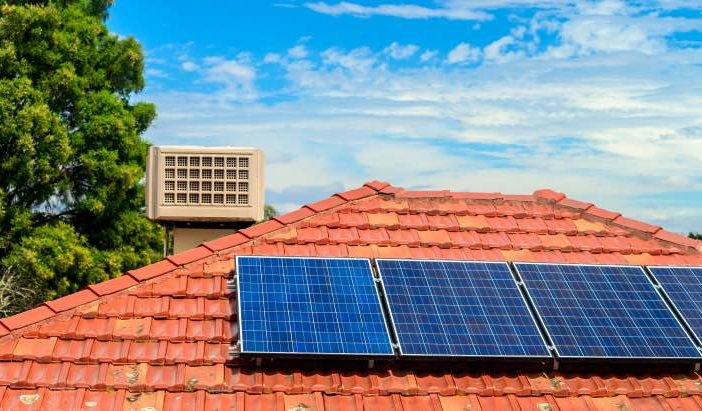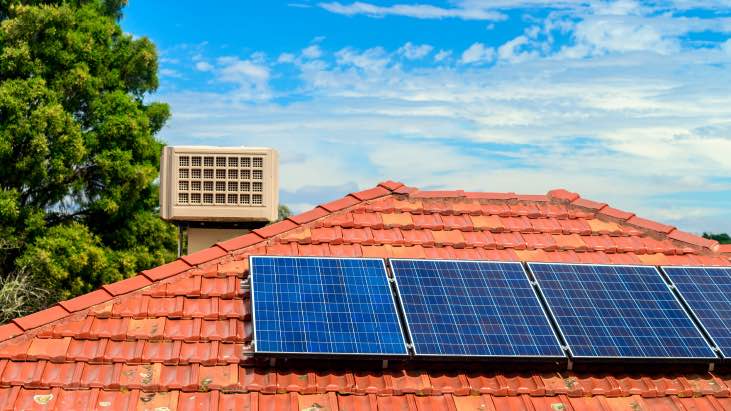
Melbourne-based distributed energy management pioneer, GreenSync, has joined forces with leading global inverter manufacturer Fronius to “future proof” Australian solar households, ensuring they can meet evolving grid requirements and gain access to new benefits from retailers, and technologies such as virtual power plants.
GreenSync is teaming up with Fronius to roll out its its cutting edge deX software via the inverters of the largest supplier in the Australian residential solar market, allowing solar households to “seamlessly” and dynamically manage their solar exports.
The functionality will be available for all of Fronius’ current solar PV inverter range in Australia, including a large number of already installed systems (even up to five years ago, according to Fronius).
GreenSync says it is also working to expand the capability to the Fronius hybrid inverter and battery technology range that is coming “soon” to the local market.
The resulting smart inverters – which would require no additional hardware or installation costs – would most immediately be equipped to meet South Australia’s mandatory requirement that all new solar systems are able to be remotely disconnected, if required by the market operator, to keep the grid stable.
This somewhat controversial rule, which has already been brought into play on one occasion on the SA grid, was rushed into action in September of last year due to the state’s huge uptake of distributed solar, which is increasingly causing new lows in minimum demand during the day and negative prices.
Negative pricing events occur when abundant rooftop generation coincides with periods of low demand on a network, posing both a system security risk for AEMO, while also causing market settlement and cost recovery headaches.
As One Step sister site RenewEconomy has reported, rooftop solar in SA has at times provided a “world first” equivalent of 100 per cent of the state’s demand (when excess wind and solar is being exported to Victoria). A minimum demand level of 358MW was set in the state on March 14, when AEMO issued instructions to switch off certain amounts of distributed solar to ensure that operational demand stayed above 400MW.
But GreenSync head of customer, Bruce Thompson, argues that what has been largely painted as a dilemma between system control and customer rights is really a win-win opportunity that has opened up, in that South Australia has accelerated a crucial shift in the market that will ultimately benefit consumers.
“GreenSync is all about synching renewables onto the grid,” Thompson told One Step Off The Grid on Tuesday. “Minimum demand is the result of an amazing success story, so we just need to take the next practical step and make sure that solar is being used effectively.
“Through a software enablement to [Fronius’] product, it allows customers to meet these immediate requirements, but also sets the foundations for those products to be able to participate as markets evolve,” he said.
On the market side, Thompson notes that each of those negative pricing days South Australia experiences means that the customer’s retailer, if that solar is exporting to the grid, has to cover that price exposure on the customer’s behalf.
“If the customer is willing to be part of a virtual power plant and reduce the [solar] export during that price period then the retailer is able to reduce its cost exposure and give the customer a better tariff,” he said.
“The [solar] generation is still there to power the home, the electric vehicle, the battery, the hot water system, we just wouldn’t be sending it to the grid at that time. … And if there was low consumption in that house [or no battery, EV or hot water system to soak up the excess solar], we would just be reducing that system generation during that period.”
Most importantly, Thompson adds, the deX-Fronius system does this in a way that is responding to the market signal.
“The problem with the market signal at the moment is that the technology hasn’t been smart enough to respond to it. This functionality would mean that customers are practically responding to a price signal,” and working with the market.
Hans Georg Einwagner, managing director of Fronius Australia agrees. “I mean there was some really bad news this year, already, with the “solar tax”… which created a lot of headaches in the market because customers we’re not sure anymore what to do,” he told One Step from Austria.
“By having smart solar systems you can avoid all of that, right, because you can control the output of a solar system whenever it’s needed; [including] if there’s less electricity in the market, you can ramp up output of the solar system and you can even make more money out of that,” he said.
“[We should] make use of that instead of just saying, okay, we will charge, now, for exports, or you have to have zero export all the time, or whatever it is.
“[The message is not] that you have to participate, but that it’s beneficial for everything – it’s, first of all, enabling the energy transition, and to really have enough renewables in the electricity market. And as an end user, you can even benefit …by using that different pricing out in the market.
All of that said, Fronius has not rushed into the partnership with GreenSync and has been careful to ensure the security of the product to protect customer data and systems.
“Fronius is always focused on doing things in the right way,” Einwagner said. “Something in your house has to be secure, as well. So we really focus on a really secure channel and … our main target is to really create something which is beneficial for all the parties in the industry; so not just for us, but also for our retail partners and the end customer.
“Especially [the end customer], because it’s really about getting the best from their solar system, in all kinds of situations, and not just having a controllable inverter … it needs to add value, that’s the target, basically.”

Sophie is editor of One Step Off The Grid and deputy editor of its sister site, Renew Economy. Sophie has been writing about clean energy for more than a decade.



